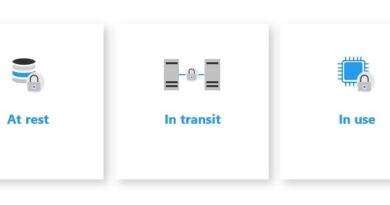How Office 365 learned to reel in phish
Today’s post was coauthored by Debraj Ghosh, Senior Product Marketing Manager, and Jason Rogers, Principal Group Program Manager at Microsoft.
We recently reported how we measure catch rates of malicious emails for Office 365 Exchange Online Protection (EOP) (available with any Office 365 subscription) and Advanced Threat Protection (ATP) (available as a standalone service or with Office 365 E5).
Today, we’re sharing the results from the enhancements we made to anti-phish capabilities for Office 365 to address impersonation, spoof, and phish content and internal phish emails sent from compromised accounts. Over the last year, Microsoft’s threat analysts discovered threat actors pivoting from malware to sophisticated, often targeted phishing campaigns. The scale of these attacks and how quickly users click through on malicious links is shown in Figure 1.

Figure 1. Phish email statistics from Office 365 from January 2018 to September 2018.
Understanding the phish landscape
To develop solutions mitigating these modern phishing campaigns, our engineers rigorously analyzed phish emails in Office 365, uncovering a general pattern of phish campaigns following the path shown in Figure 2.

Figure 2. Phish email campaign pathway from initial reconnaissance to data exfiltration.
Additionally, since Office 365 is one of the world’s largest email service providers, Microsoft gains visibility and experience across most—if not all—types of cyber threats. Every day, Microsoft analyzes 6.5 trillion signals, and each month we analyze 400 billion emails, while detonating 1 billion items in our sandbox. This telemetry helps us understand the full spectrum of phish attacks and the sophisticated and varied methods used by attackers, summarized in Figure 3. With this understanding of the phish landscape, our engineers not only designed new capabilities, but also enhanced existing capabilities to address the phishing emails being launched at customers.

Figure 3. Phish emails attack spectrum and variety of attack methods.
Understanding the situation
When we began our journey of enhancing our anti-phish capabilities, we admittedly were not best of breed at mitigating phish. As we alluded to previously, transparency with customers is a core priority at Microsoft. Figure 4 shows the number of phish emails that Microsoft (Office 365) missed in comparison to several other vendors also protecting email for customers within Office 365.
From November 2017 to January 2018, you see that Office 365 (orange bar in Figure 4) was not the best solution at phish catch. (We previously discussed how we measure phish catch.) The values are based on normalized email volume. As the inset plot shows, the scale of mail volume in Office 365 far exceeds the mail volume of third-party vendors. Fundamentally, this scale is one our differentiators and strengths as it offers us much greater depth and breadth into the threat landscape.

Figure 4. Normalized phish email miss from November 2017 to January 2018 in Office 365 email traffic. Inset shows actual mail flow volume.
Solving the problem with our technology, operations, and partnerships
Leveraging our signal from mail flow, the expertise of 3,500 in-house security professionals, and our annual $1 billion investment in cybersecurity, we strategically addressed the growing wave of phishing campaigns. Our engineers determined four categories of phish emails and designed capabilities addressing each type. Figure 5 summarizes the enhancements made to the anti-phish capabilities in Office 365.

Figure 5. Phish email categories and anti-phish enhancements made in Office 365 to address the categories.
Details on all the anti-phish updates for Office 365 are available in the following posts:
While the enhancements are interesting, ultimately, catch rate is the parameter that counts, and it is important to remember that no solution can ever stop all threats. Sometimes misses occur, and the most effective solution will miss the least. To this end, we are very excited to share our phish miss rate from May 1, 2018 to September 16, 2018. As you can see in Figure 6, today, when compared to the same set of vendors that we compared ourselves to in November to January, we exhibit the lowest miss rate of phish emails in Office 365. Figure 6 is the culmination of the incredible focus, drive, and expertise of Microsoft researchers and engineers working together to push the boundaries of threat research, machine learning, and development of algorithms that together provide customers the most impressive and effective protection against phish emails available for Office 365 today.

Figure 6. Normalized Phish Email Miss Rate in Office 365 from May 1, 2018 to September 16, 2018. Inset is a blowup of the graph from August 1, 2018 to September 16, 2018.
While the graph in Figure 6 is illuminating, we also want to share statistics from Office 365 EOP/ATP related to phish mitigation. Figure 7 is a summary of the remarkable impact these powerful new anti-phish capabilities across EOP/ATP have had with helping secure Office 365 users, and further showcases our tremendous depth and scale into the threat landscape. For those unfamiliar with Office 365 ATP, “Safe Links” provides time of click protection from malicious links in email where the click triggers several different protection technologies, including URL reputation checks, machine learning capabilities, and link detonation as needed. Recently, Safe Links expanded its capabilities to intra-org emails, making Office 365 ATP the only service to offer this type of protection while ensuring the internal emails remain within the compliance boundary of Office 365. We hope you agree at that the anti-phish capabilities have evolved at a remarkable pace and with amazing results.

Figure 7. The impact to end users from the enhanced anti-phish capabilities in Office 365.
Learn more
We hope this post provides a good overview on how we are helping customers with modern phishing campaigns. Please be sure to check out the Ignite session, Secure enterprise productivity with Office 365 threat protection services including EOP, ATP, and Threat Intelligence, where we give more details. Your feedback enables us to continue improving and adding features that will continue to make ATP the premiere advanced security service for Office 365. If you have not tried Office 365 ATP for your organization yet, you should begin a free Office 365 E5 trial today and start securing your organization from the modern threat landscape.
READ MORE HERE



